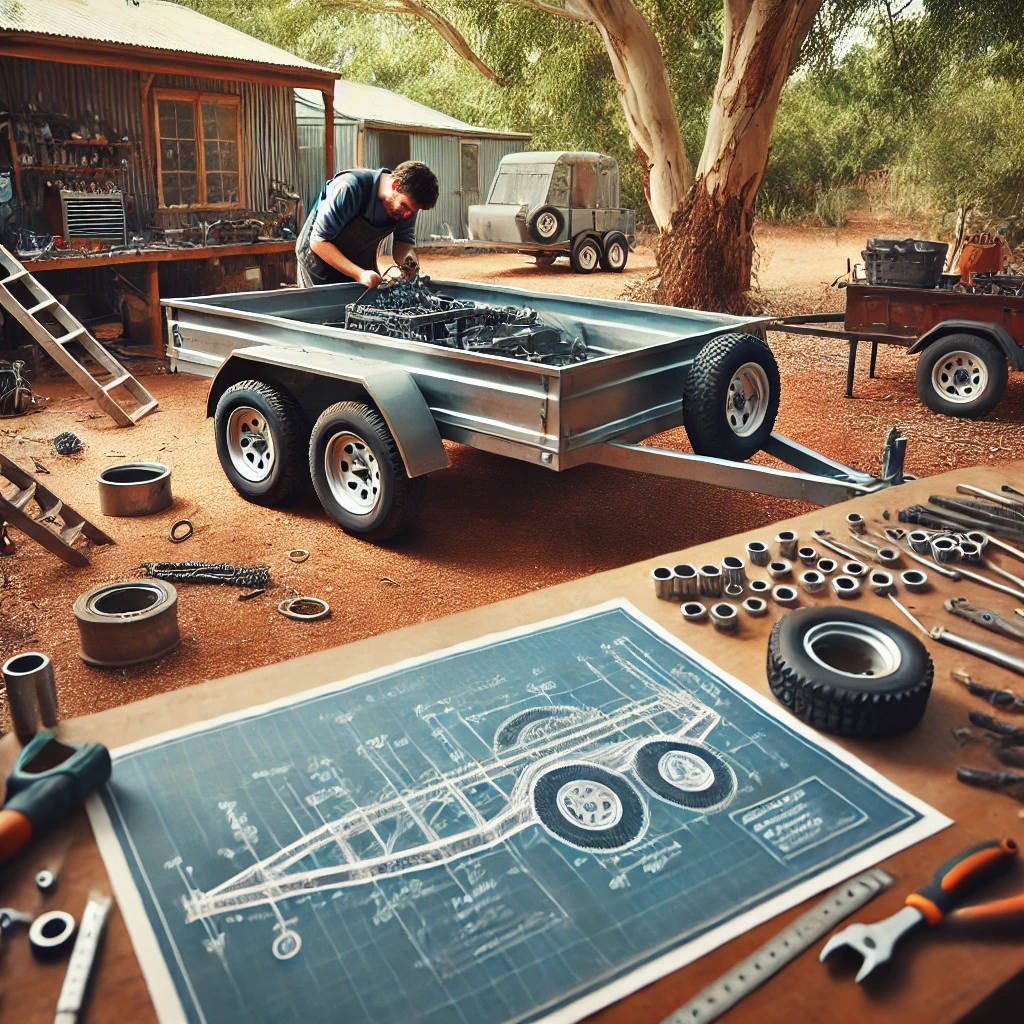
Building a DIY trailer can be a fulfilling project, but choosing the right design is key to ensuring it suits your needs and complies with Australian safety regulations. Whether you’re hauling tools, boats, or equipment, selecting the proper design upfront will save time, money, and potential headaches. Here's a quick guide to help Australian DIY builders choose the perfect trailer design.
1. Identify Your Trailer’s Purpose
The first step is to decide what your trailer will be used for. Each purpose has its own design requirements:
- Utility Trailers: Best for general-purpose use, such as transporting tools, equipment, or materials. Opt for a flatbed or box trailer for versatility.
- Boat Trailers: Must have a low-profile frame, lightweight construction, and rust-resistant materials.
- Car Trailers: Need a heavy-duty frame and larger capacity to support vehicles.
Think about the size and type of loads you’ll carry most often and design the trailer accordingly.
2. Understand Load Capacity and ATM
The Aggregate Trailer Mass (ATM) is the total weight of the trailer and its maximum load. This is critical to ensure your trailer can handle what you need to carry. If you exceed the trailer's capacity, you risk damaging your axle, compromising safety, and voiding your registration.
For lighter trailers under 750 kg ATM, you don’t need brakes. But trailers between 750 kg and 2,000 kg ATM need brakes on at least one axle. Anything over 2,000 kg must have brakes on all wheels, along with a breakaway system. Ensure your design and components, like the axles and brakes, match the trailer's load capacity.
3. Choose the Right Materials
The materials you choose for your trailer will affect both its performance and durability. In Australia, galvanised steel is a popular choice because it resists corrosion, especially in coastal areas. For lighter builds, aluminium is a great option as it reduces the trailer’s overall weight and is also rust-resistant, though it comes at a higher cost.
Make sure to choose materials that are easy to source and work with, considering both strength and weight to ensure a safe and durable trailer.
4. Meet Australian Standards
Every trailer on the road in Australia must comply with the Vehicle Standards Bulletin 1 (VSB1), which outlines the minimum safety requirements for trailers up to 4.5 tonnes. This includes specifications on:
- Lighting: Trailers must have proper tail lights, indicators, reflectors, and number plate lights.
- Braking: As mentioned, trailers over 750 kg ATM require brakes, and trailers over 2,000 kg must have a breakaway system.
- Dimensions: Ensure the trailer doesn’t exceed 2.5 metres in width, 12.5 metres in length, or 4.3 metres in height.
These requirements are not just legal obligations but essential for ensuring your trailer is safe and roadworthy.

5. Consider Axle Placement and Suspension
Axle placement plays a major role in how well your trailer tows and handles loads. In general, placing the axle slightly behind the midpoint of the trailer provides better balance and reduces the risk of trailer sway. You can also consider dual-axle designs if you plan to carry heavy loads regularly.
For suspension, leaf springs are commonly used in Australia due to their reliability and cost-effectiveness, especially for off-road or rugged conditions. Torsion bar suspension is smoother but more expensive, making it suitable for lighter, road-only trailers.
6. Modular Kits or Custom Build?
Decide whether you want to buy a modular trailer kit or build from scratch. Modular kits are popular in Australia and include pre-engineered components, which can save time and ensure you meet regulatory standards. However, if you’re after a unique design or have specific needs, a custom build offers more flexibility—just ensure you have the tools and skills for the job.

Final Thoughts
Selecting the right design for your DIY trailer is all about balancing your needs with safety and compliance. Take time to understand your trailer’s purpose, the materials you'll use, and ensure it meets Australian safety standards. A well-designed trailer will last longer, perform better, and keep you on the right side of the law.
Happy building, and stay safe on the road!
